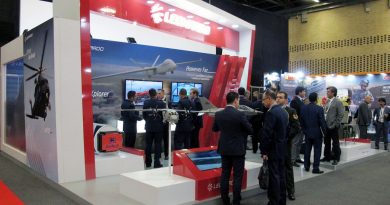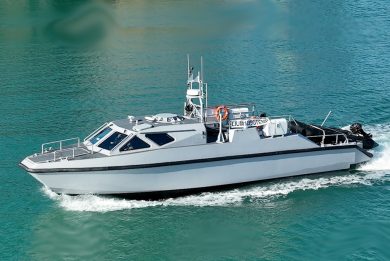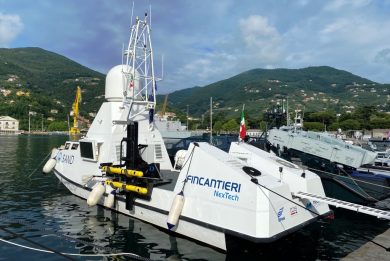SeaFuture 2023 – MBDA details the status of the Teseo Mk2/E programme
Industry and customer, that is MBDA and the Italian Navy, detailed the status of the Teseo Mk/2E programme on Day 3 of the SeaFuture 2023 exhibition and conference at La Spezia, Italy
The evolution of blue water as well as brown water scenarios led the Italian Navy, at the end of the last decade, to consider the development of the Teseo Mk2/A Block 4 currently in service into a new missile that would leverage part of the existing subsystems, with the insertion of new technologies to considerably increase its performances.
The contract for what is known as the Teseo Mk2/E was signed in late 2020 and became effective on January 21st, early 2021, first deliveries being expected in the second half of 2027. The contract includes the development, qualification, industrialisation, as well as the modification of launch system to allow them hosting both variants, an initial logistic package being also part of the deal.
The new missile, which launch weight will be 700 kg without booster, will have a range the double of the current one, over 350 km at sea skimming level, and will retain high-subsonic speed, EDR On-Line understanding that terminal manoeuvrability will be much higher than that of the Mk2/A, a key feature to counter the close in weapon systems threat. The AESA radar seeker will provide improved accuracy as well as higher robustness against electronic countermeasures. The seeker, developed in cooperation with Leonardo, is currently in the detailed design review phase, a prototype being expected in early 2024. The RF seeker is not the only one available, an electro-optic sensor allowing semi-active laser guidance on targets illuminated by third parties, airborne or land-based, being used mainly for land targets. Attack on coordinates is obviously possible, MBDA stressing the anti-spoofing capabilities of the GNSS receiver. Although not required by the Italian Navy, further terminal guidance sensors such as imaging infrared might be added thanks to the missile growth capability.
Improving the missile effectiveness against land targets also led to the development of a new warhead of the semi-piercing high-explosive type, fitted with an impact and proximity fuse; to allow missions against targets with collateral damages issues the warhead is scalable.
Another key element of the new missile is the SATCOM data link, which is added to the existing line-of-sight one. The SATCOM bi-directional link is used to ensure full control of the missile until the final attack phase, with re-targeting and abort capabilities.
Navigation is provided by a GNSS/INS platform, the planning mission system allowing feeding 4D waypoints, space and time, which permits to carry out saturation attacks launching salvos, missiles attacking the target at the same time from different angles. The sea-skimming system automatically adapts when the missile leaves the maritime environment and starts flying over land at very low altitude.
A new motor will ensure the Teseo Mk2/E propulsion, the booster being of the axial type, while the Mk2/A was fitted with two lateral boosters. This, as well as the new airframe architecture, will lead to a square section launch canister, with a smaller frontal section. Launchers will be modified to allow the use of both Mk2/A and Mk2/E missiles. Although the missile in flight will be shorter than the in-service one, less than 5 metres, miniaturisation of some elements allows hosting more fuel, which coupled to the more effective motor leads to the increased range.
The Italian Navy did not required a vertical launch capability, as this would have meant deep modifications on existing ship such as the Horizons and the FREMMs. However MBDA stated that the adoption of the axial booster might well open doors to a vertical launch version in the future, should a customer require it.
The Teseo Mk2/E passed the Preliminary Design Review in March 2023, MBDA being now working full steam to reach the Detailed Design Review step. Wind tunnel tests are expected within 2023 to confirm computational fluid dynamics models.
Five firing campaigns are planned, F0 to validate the initial phase of the launch, which involves the booster. F1 will allow validating the aero-propulsive chain and the airframe, the following one being F2 for the seeker, F3 for validating land attack capabilities, and finally F4 with the launch from a ship that will validate modifications to the ship launch system.
This will mainly involve the upgrade of consoles software to include new functionalities as well as hardware adaptation for launch ramps.
The missile will be entirely manufactured in the MBDA La Spezia plant, the pyro integration being carried out in the Aulla plant, not far from the assembly facility.
According to MBDA the work on the new Teseo Mk2/E is proceeding in line with the timeline.
Photo by P. Valpolini




